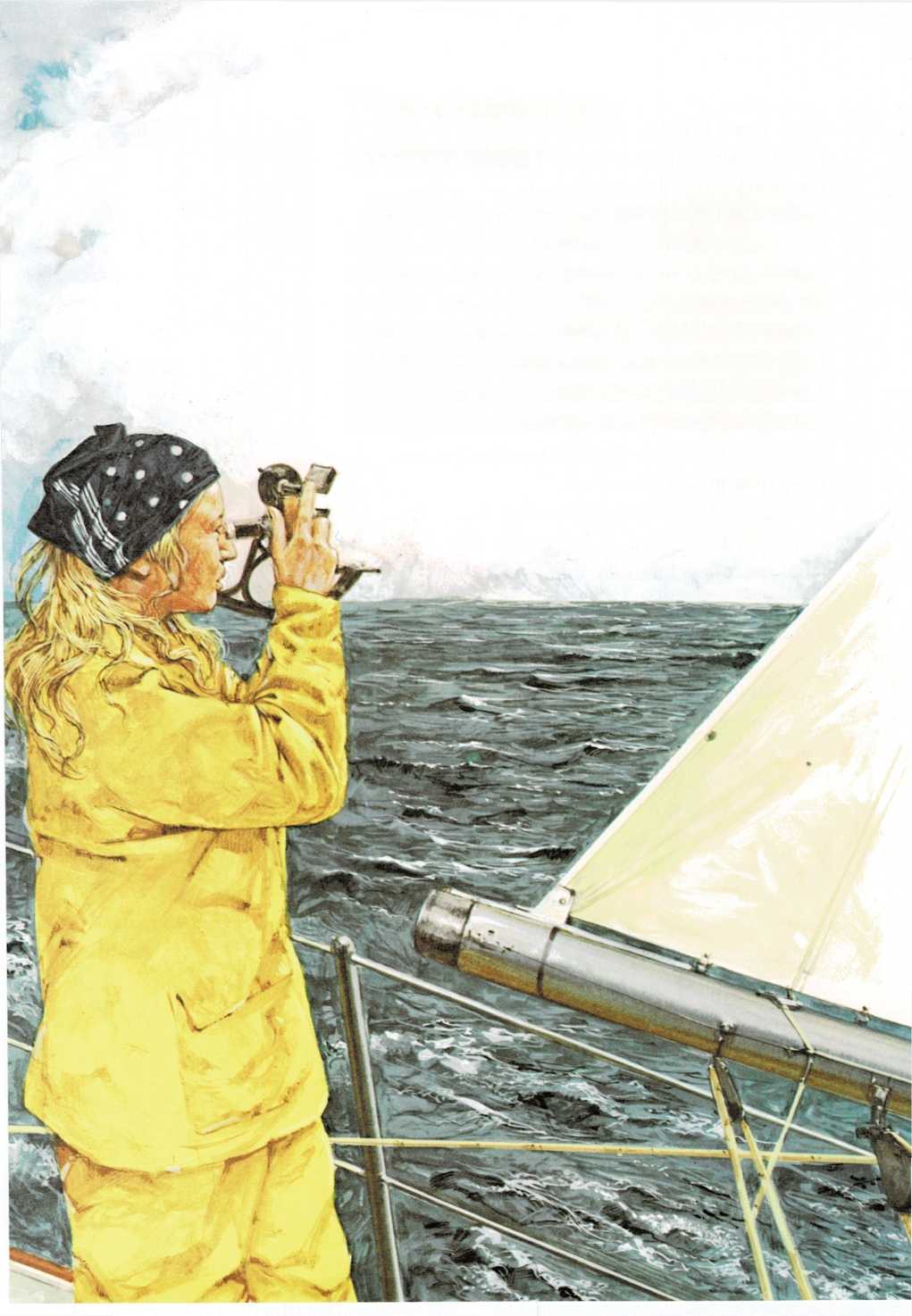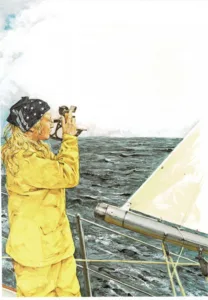
The challenge of the sea
The sea is a place of danger. For this very reason, it is also a
challenge. People are willing to defy its dangers, to risk their
lives, so as to conquer it in some way. And many of them have done it
alone! In 1876, a fisherman named Alfred Johnson set out to become the
first person to sail alone across the Atlantic. He started from
Gloucester, Massachusetts,
and reached Wales forty-six days later. His small boat, the
Centennial, was only twenty feet (6 meters) long.
In 1896, two Americans decided to row across. George Firbo and Frank
Samuelson took fifty-five days to row their boat from New York City to
the Scilly Islands, just off the coast of England. Their boat was
eighteen feet (5.4 m) long.
On April 24, 1895, an American, Joshua Slocum, set out to become the
first person to sail alone around the world. His boat, the Spray, was
only a little more than thirty-six feet (10.8 m) long. He made a lot of
stops, and his trip took about three years.
In 1969, Robin Knox-Johnston of Great Britain became the first person to
sail alone around the world without making any stops. His voyage took
313 days.
In that same year, John Fairfax of Great Britain became the first person
to row alone across the Atlantic. It took him 180 days.
In 1978, Naomi James of New Zealand became the first woman to sail alone
around the world by way of Cape Horn, at the tip of South America.
Those who challenge the sea do not always win. Many men and women have
sailed off, never to be seen again. But if there were no danger, there
would be no challenge.
Naomi James, who sailed alone around the world in 1978, uses a sextant
to find out where she is.

